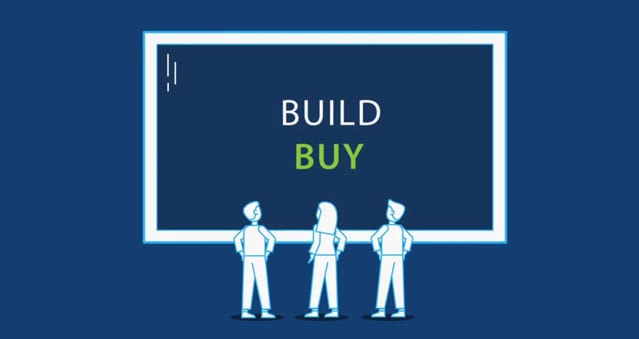The subscription economy is booming, and with good reason. Whether a consumer or business, you can purchase a subscription for virtually anything – from clothing and coffee to software and data storage. Today, nearly everything and anything is offered on a subscription model basis, including products and services previously thought unsuitable for this business model such as vehicles, healthcare, and accommodations.
Not just a trend, the subscription economy is here to stay, providing companies with one of today’s most profitable business models. To this point, The Subscription Economy Index found the subscription economy has grown by a whopping 435% over the last decade and is expected to reach a market size of $1.5 trillion by 2025.
Uncovering the Differences: Traditional vs. Subscription vs. SaaS
Unlike traditional business models where customers pay a one-time fee for purchases, subscription models charge customers at regular intervals (monthly, quarterly, annually) for access to products and services. Where and how does software-as-a-service (SaaS) fit into this paradigm?
Although the terms – subscription and SaaS – are many times used synonymously, they are not the same. A subscription refers to how the product or service is monetized, whereas SaaS refers to how the software is delivered and deployed to the end customer. While the terms are complementary, their differences need to be taken into consideration.
Subscription
Tied to the duration of the contract, subscription is a monetization model that describes how the customer pays for the products and services. This recurring revenue model provides companies with a steady revenue stream.
SaaS
SaaS is a deployment model, where the software vendor hosts the software and provides it as a service to their customers. In this model, the software supplier takes on the responsibility (and all related costs) of running the software like hosting, maintenance, and updates. It’s the costs associated with this delivery model that makes SaaS and subscription complementary. By the same token, the subscription business model easily lends itself to the SaaS deployment model because the recurring revenue stream inherent to the subscription model provides the income needed to run the software.
Let’s dive a bit deeper into subscription models.
Subscription Models: One-Size-Doesn’t-Fit-All
Given that nearly everything can be obtained on a subscription basis, there are several types of models to choose from. Let’s look at five of the most common subscription models available to businesses.
1) SaaS subscriptions
Subscriptions are typically monthly, quarterly, or annual licenses for solutions such as customer relationship management (CRM) and sales management software – think HubSpot and Salesforce. Types of SaaS pricing models include:
- Freemium: Used in the software industry since the 1980’s, freemium is a blend of words – ‘free’ and ‘premium’. This billing strategy provides basic products or services free of charge. However, should additional features, functionality, products, or services be needed, a fee is then charged to the customer.
- Flat-rate: This pricing model charges customers a fixed price for the products or services used, which are typically charged on a monthly or annual basis.
- Tiered pricing: This pricing model consists of different discounts or benefits based on the quantity of products or services purchased, or alternatively the level of features within the products or services. Once a customer reaches the top of the purchased tier, they are automatically upgraded to the next tier.
- Per seat: Pricing is based on the number of individuals that use the software. For example, a 25-seat license means that up to 25 named individuals can access the software program.
- Pay-as-you-go: This pricing strategy allows users to pay based on how much of the product or service they consume. For example, a cloud storage service provider would charge based on the amount of storage used, while a telecommunications company may bill based on minutes used or data consumed.
- Hybrid: A unique pricing model that enables the company to invoice customers based on a combination of charge types such as fixed rate and usage-based pricing.
- Dynamic billing: The most innovative of the fluctuating pricing strategies, it enables organizations to create pricing models based on multiple variables, such as formula-based, time-based, demand-based, and event-based.
2) Usage-based subscriptions
This consumption-based subscription model bills customers based on how much of the product or service is used during the billing cycle. Industries that gravitate to this subscription-based model include those that provide communications tools like Twilio and cloud-based storage and analytics services such as Snowflake.
3) Product-based subscriptions
A monthly or annual fee is charged for use of products such as office furniture, laptops, printers, etc.
4) Service-based subscriptions
Whether service for products or software, this subscription model offers support on a recurring basis, and may be sold as a warranty or upgrade.
5) eCommerce subscriptions
Consisting of two subsets – autoship subscriptions and curated subscriptions. Autoship provides customers with a regular supply of the same products, whereas curated subscriptions provide customers with boxes that contain a unique (or rotating) selection of products.
Today’s rapidly evolving business landscape has made it possible for businesses to explore a variety of subscription-based business models and pricing strategies, however the right one is very much dependent on your industry, products/services, and target market.
Unsure which subscription models are right for your company? Or are you on the fence as to whether offering your products and services on a subscription basis will enable you to take your business to the next level? Then check out Why a Subscription-Based Business Model May be Right for Your Company.
Open the Door: Benefits are Knocking
People are hooked on the convenience subscriptions provide. Plus subscription models – from both a business and customer perspective – have a ton of benefits.
Business Benefits
Delivers a predictable revenue stream: Recurring revenue provides businesses with a predictable cash flow, making it easier to accurately predict future revenue.
Lowers customer acquisition costs: Since this business model receives consistent and regular revenue, subscription-based companies spend less time and money on acquiring new customers.
Decreases customer retention costs: Not only do subscription-based companies benefit from lower customer acquisition costs but customer retention costs are also lower. Customers that pay on an ongoing basis are more committed to long-term engagements, and less likely to churn.
Increases sales opportunities: Leveraging up-sell and cross-sell initiatives, subscription-based businesses have the opportunity to sell new features, upgrade plans, non-core products, etc. to existing customers.
Expands target market: Subscription models lower the entrance barrier for prospective customers, subscription-based companies can extend their reach and attract customers outside their target market.
Provides for better metrics: The ongoing customer relationships inherent to this business model provides for deeper customer insights than those received by traditional one-off sales companies – providing views into customer lifetime value (CLV), churn rate, renewal rate, average revenue per account (ARPA), product usage, etc.
Allows for easy pricing modifications: As the company grows, pricing models can be easily adjusted to meet growing needs.
Fosters customer loyalty: Subscription models cultivate a loyal customer base. Subscription-based businesses benefit from having the opportunity to build stronger and more personalized relationships with their customers, which can increase CLV.
Subscriber Benefits
Provides predictable costs: The predictability of costs over a consistent period helps the subscriber to budget their finances more effectively, as well as improves the customer experience.
Allows for temporary ownership: The subscription mindset – ‘why own when you can subscribe?’ – forgoes purchasing in favor of paying a relatively small fee (when compared to ownership) for products and services.
Reduces CapEx: Reducing upfront investments shifts expenses from CapEx to OpEX.
Lessens risk: As the subscriber’s needs change, they can easily modify their subscriptions, which is less risky than perpetual licenses.
Sell Once, Earn Revenue Over the Long Term
Looking ahead, it’s clear that subscription models will continue shaping the business landscape. The subscription business model provides companies with the unique opportunity to sell once and earn revenue over the long term. However, even with its countless benefits, subscription management can be challenging.
BillingPlatform provides an industry leading multi-tenant, cloud-based solution that enables companies – large and small – to automate their revenue management processes. Our solution provides subscription-based businesses with the ability to support any business model with any combination of one-time charges, subscription, consumption/usage, or hybrid-based billing – all on a single platform.
As the recognized leader in billing and revenue management, BillingPlatform provides everything you need to join the subscription economy. Our complete solution fulfills 100% of your business requirements.With mediation, rating, invoicing, collections, reporting, analytics, revenue recognition, and A/R subledger, you can quickly react to market trends and grow revenues by complementing your subscription models with innovative metered and usage-based pricing. Curious to learn more and see how we can help? Go ahead and get in touch with our team today!



